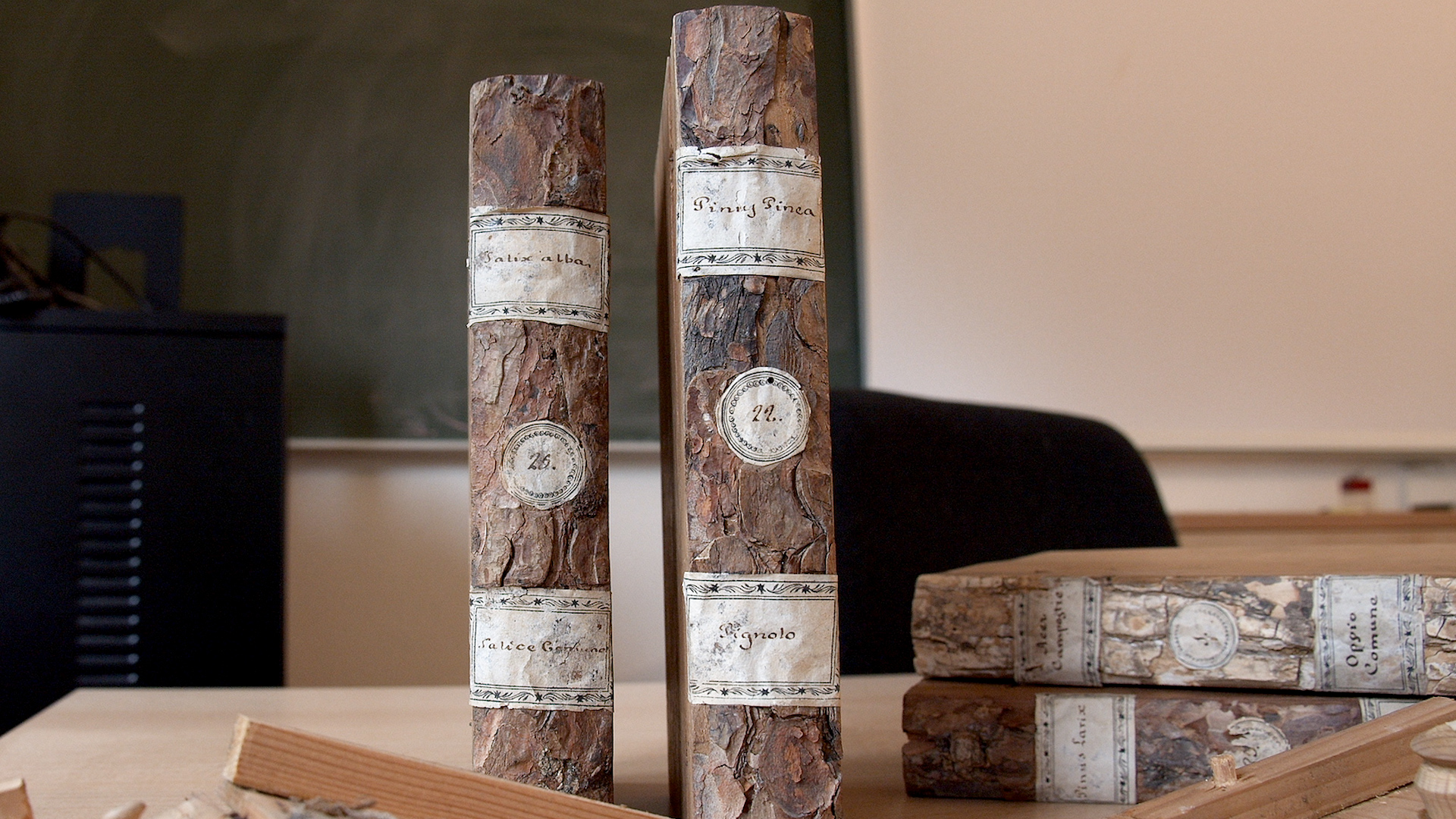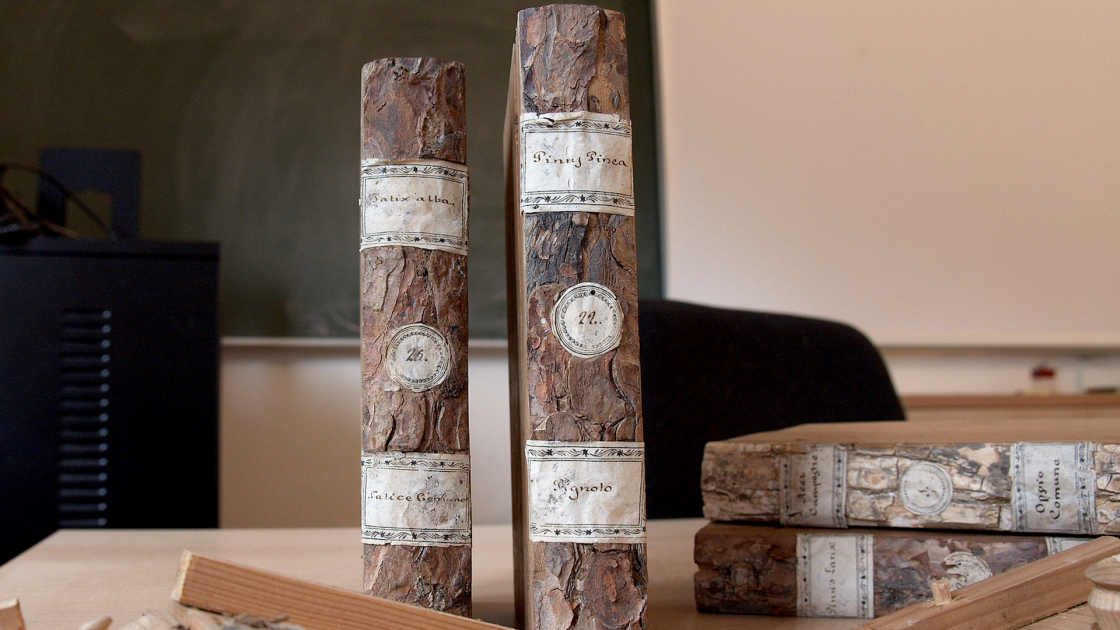
Wooden books of San Vito di Cadore xylotheque, Photo: Elisa Speronello
The Center for the Study of Alpine Ecology of San Vito di Cadore (Bellono) hosts a “Very Special Library”, one xylotheque with Unique works of science, technology and artisanal beauty. It is a collection of wooden books that you love Germano Gambi wrote in a 1969 article, Responsible for Forest Botany at the University of Padua, they represent “the taste of an age I love combining scientific rigor with a sense of beauty somewhat mundane but blissful, and sharing the human spirit, with its artistic intuition.”
Built in the mid-19th century “by an unknown craftsman”, these are true natural masterpieces with small dimensions: 19 x 12.5 x 3.5 cm. “It seems that every book has been extracted from the stumpfrom inside the tree – Tommaso Anfodillo, Professor of Forest Ecology at the Tesaf Department at the University of Padua and coordinator of the L. Susmel Study Center in San Vito – explains. The back is the bark, with the Latin name and scientific name. Beauty is discovered when you open these books not on pages but in an orderly, numbered and well-thought-out manner, all the characteristics of the chosen tree.” So when opened we find all the parts of the plant: “A branch, to which is also added a cross-section, a seedling, that is, a young plant, a flower, Root, also in this case with a cross section, a block of wood for technological use. Then we find some containers: one contains seeds, another contains sawdust, the third contains ash from combustion, surrounded by a small piece of coal. “All these parts are illustrated in a small sheet of paper kept in the center of each book.” For example, in the paper there is a description of the characteristics of the species Silver fir, an evergreen tree of high quality wood.
Photography and editing: Elisa Spironello
using techniques dendrochronology It is possible to determine the time of manufacture of these books, by measuring the thickness of the rings, and thanks to a reference curve, made by our department of conifers in an alpine environment, taking into account the annual variations shown by the tree according to the season, it is possible to synchronize this series of increments with respect to a unitary series. This synchronization procedure tells us, roughly, They were supposed to be built between the 1920s and 1940s, which is the time when the fashion for these books spread to Europe‘, says Anfodillo, who adds: ‘Compared with similar books produced in Germany or Sweden, there are certain details: in addition to being clear, skill and experience of those who built them, here are the genetic stages of the plant. Young plants, seeds and flowers were collected in different seasons: a multi-year harvest. This is a real expert project.”
The collection initially consisted of a hundred pieces, and today the collection includes a little more than half of them. It is said that in the 1950s, Professor Susmel, emeritus of ecology and founder of the Center for the Study of San Vito di Cadore, was the home of the same xyloethic.
Finally, on the mysterious and never-resolved question relating to the unknown author, Franco Viola, a former professor of ecology and regional planning in Padua, wrote in the book Remember the trees (Antiga editions, 2020). In the inventory of assets in the Agricultural Garden of the University of Padua, drawn up at the end of 1870, there is an accurate description of books with backs of bark often covered with various lichens […] And the sides of polished wood [..] Someone claims that this artistic and scientific masterpiece is the work of Pietro Arduino, who in the middle of the eighteenth century was the first curator of the botanical garden, and from 1765 and the first in the world, professor of agriculture at the University of Padua (Cathedra ad Agriculture Exsperimentalem). However, another person asserts that this collection is the work of an anonymous craftsman, who worked a few years after Arduino’s death, when the management of the agricultural garden, under the new Habsburg government, passed to Luigi Confliacci. What is certain is that in order to conceive and realize this masterpiece of intelligence, technical expertise is not sufficient, but a very deep knowledge of nature and the ability to comprehend its most intimate essence is required.

“Infuriatingly humble alcohol fanatic. Unapologetic beer practitioner. Analyst.”


